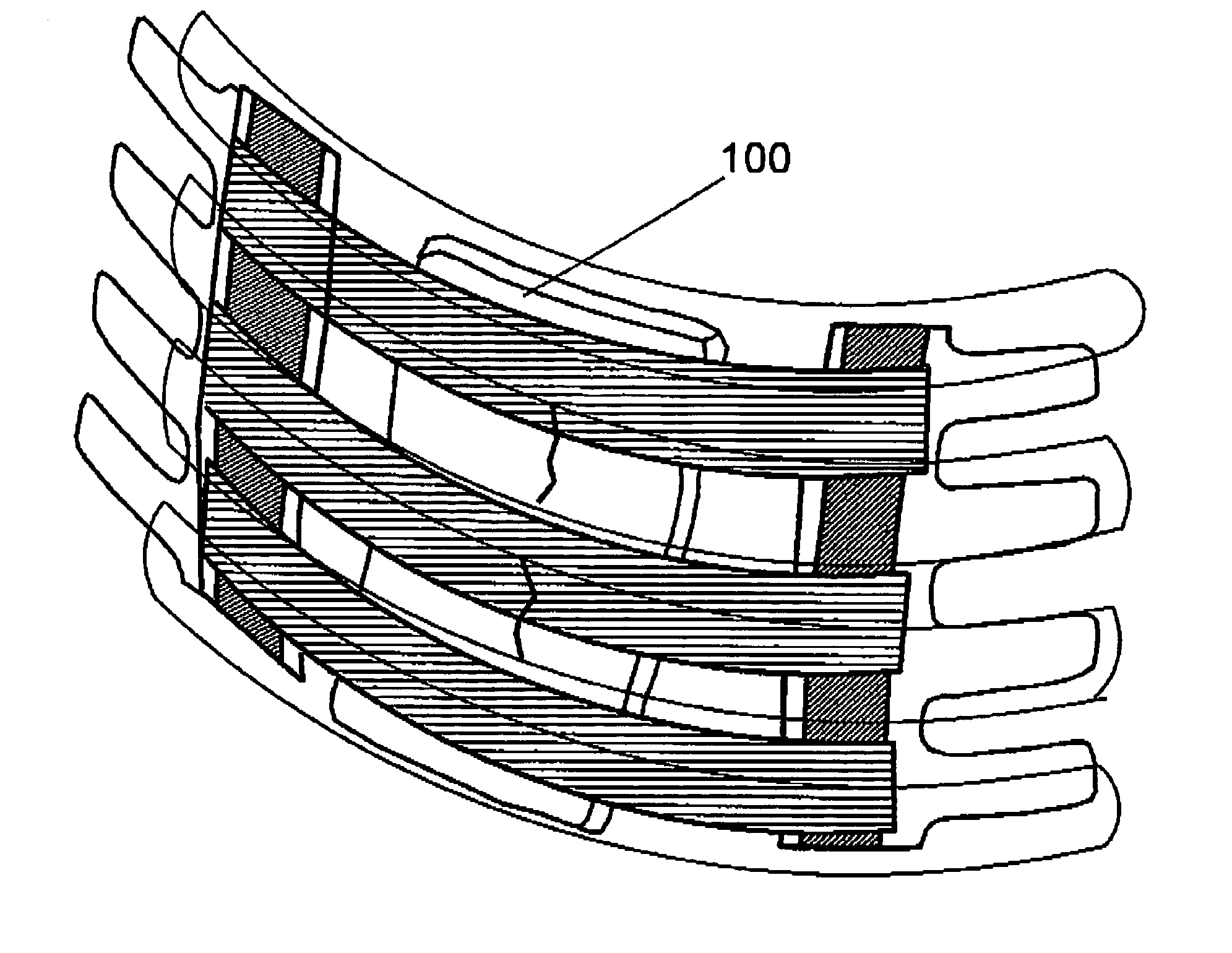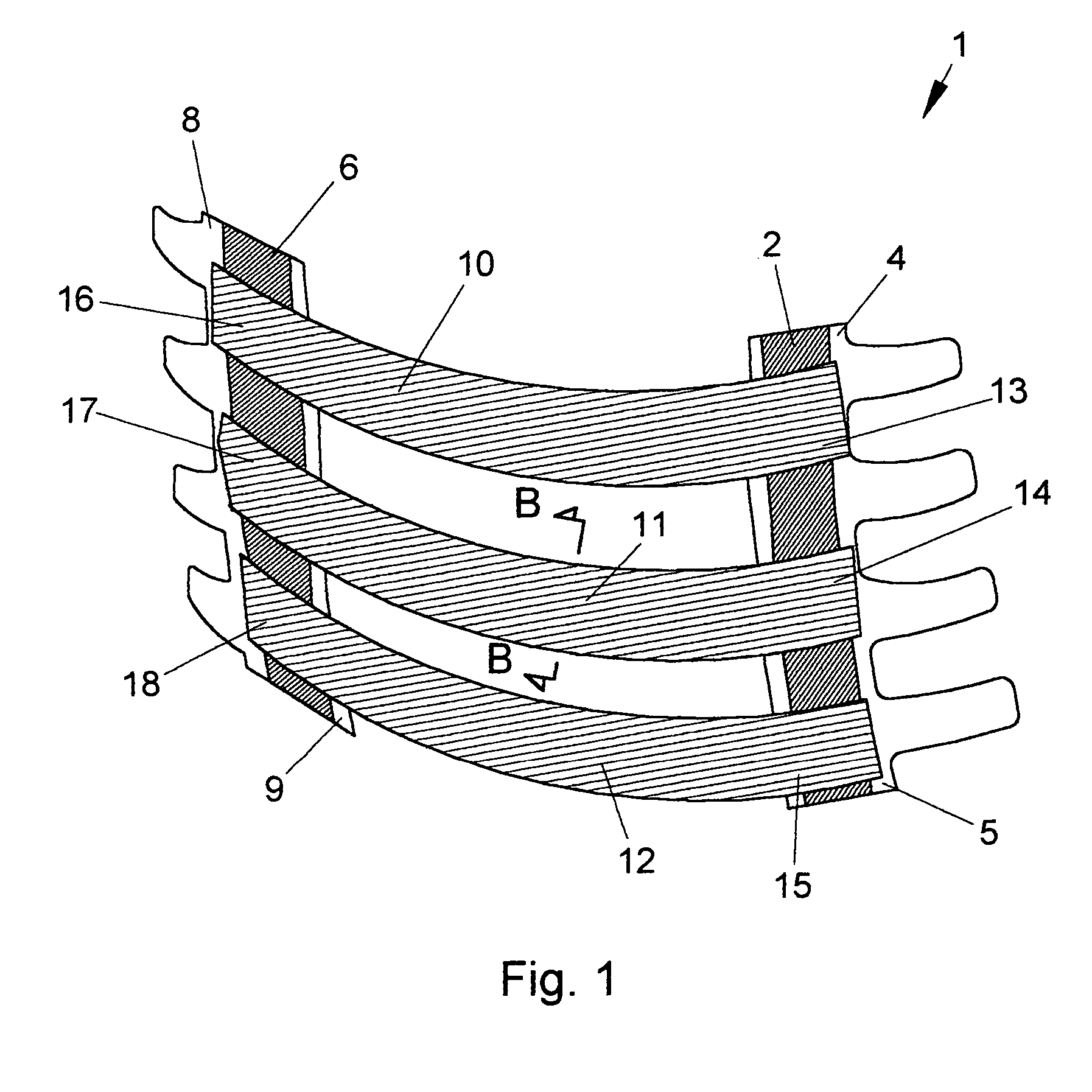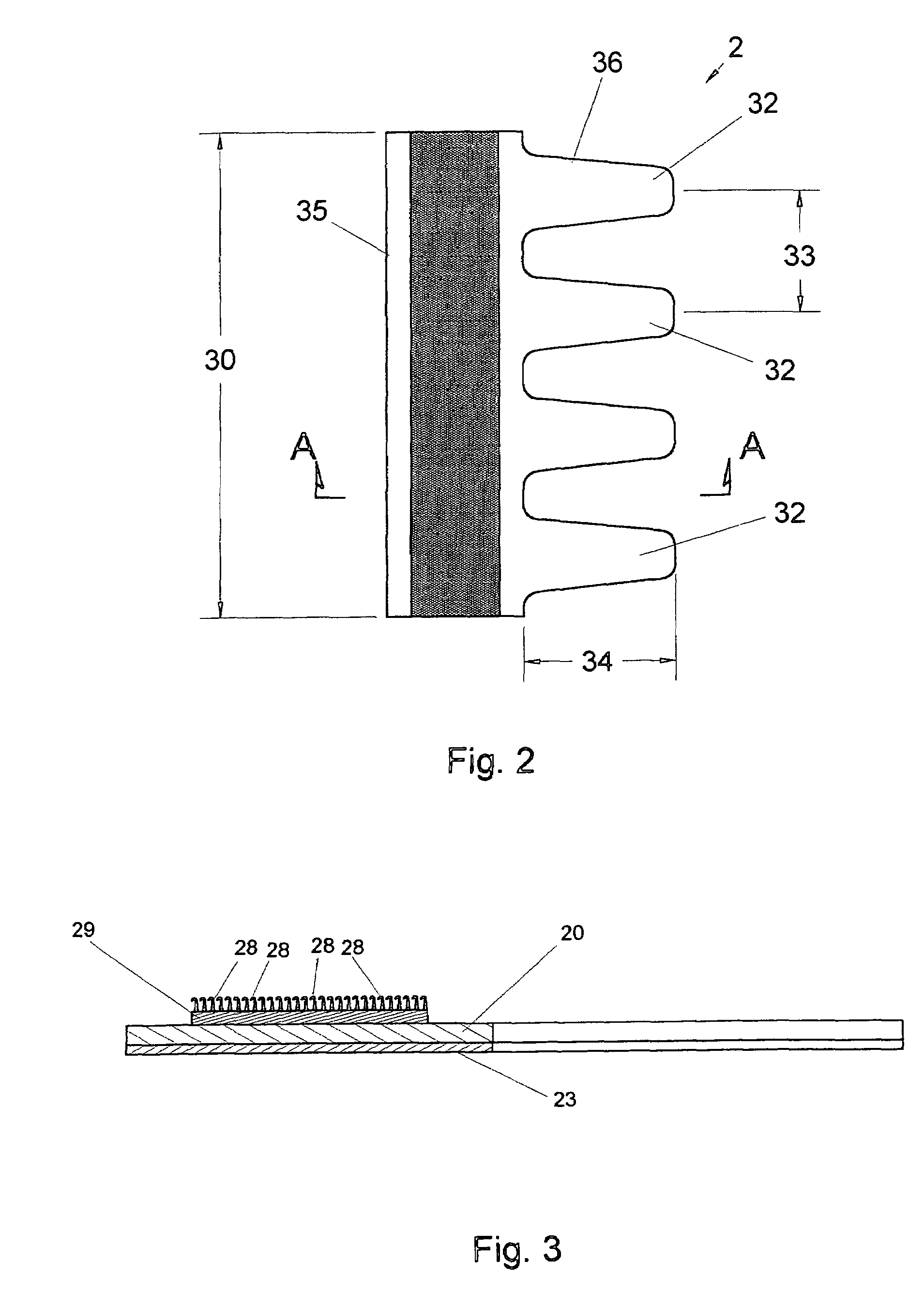Method for splinting rib injuries
a rib and splinting technology, applied in the field of stabilizing/splinting fractures, can solve the problems of not being able to adjust the patch, showering is problematic, and the task is beyond the skill of most patients, and achieve the effects of reducing force, increasing chest expansion, and reducing for
- Summary
- Abstract
- Description
- Claims
- Application Information
AI Technical Summary
Benefits of technology
Problems solved by technology
Method used
Image
Examples
Embodiment Construction
[0031]As used herein, medial is defined as the direction toward the center of the body of a patient, and lateral is defined as the direction away from the center of the body.
[0032]Referring to the Figures, as best seen in FIG. 1, Rib Splint 1 comprises a more or less vertical, medial anchor strip 2 having an upper end 4 and a lower end 5 and a lateral anchor strip 6 having an upper end 8 and a lower end 9. Splint 1 also comprises a plurality of more or less horizontal elastomeric straps 10, 11, and 12 having medial ends 13, 14 and 15 respectively and lateral ends 16, 17 and 18 respectively, the medial ends being removably attached to medial anchor strip 2, and the lateral ends being removably attached to lateral anchor strip 6. Three elastomeric straps are shown, however, the actual number used will depend on the injury being treated and may be more or less.
[0033]Referring to FIGS. 2 and 3, medial anchor strip 2 of length 30 has a lateral edge 35 and a medial edge 36 which forms a p...
PUM
 Login to View More
Login to View More Abstract
Description
Claims
Application Information
 Login to View More
Login to View More - R&D
- Intellectual Property
- Life Sciences
- Materials
- Tech Scout
- Unparalleled Data Quality
- Higher Quality Content
- 60% Fewer Hallucinations
Browse by: Latest US Patents, China's latest patents, Technical Efficacy Thesaurus, Application Domain, Technology Topic, Popular Technical Reports.
© 2025 PatSnap. All rights reserved.Legal|Privacy policy|Modern Slavery Act Transparency Statement|Sitemap|About US| Contact US: help@patsnap.com



